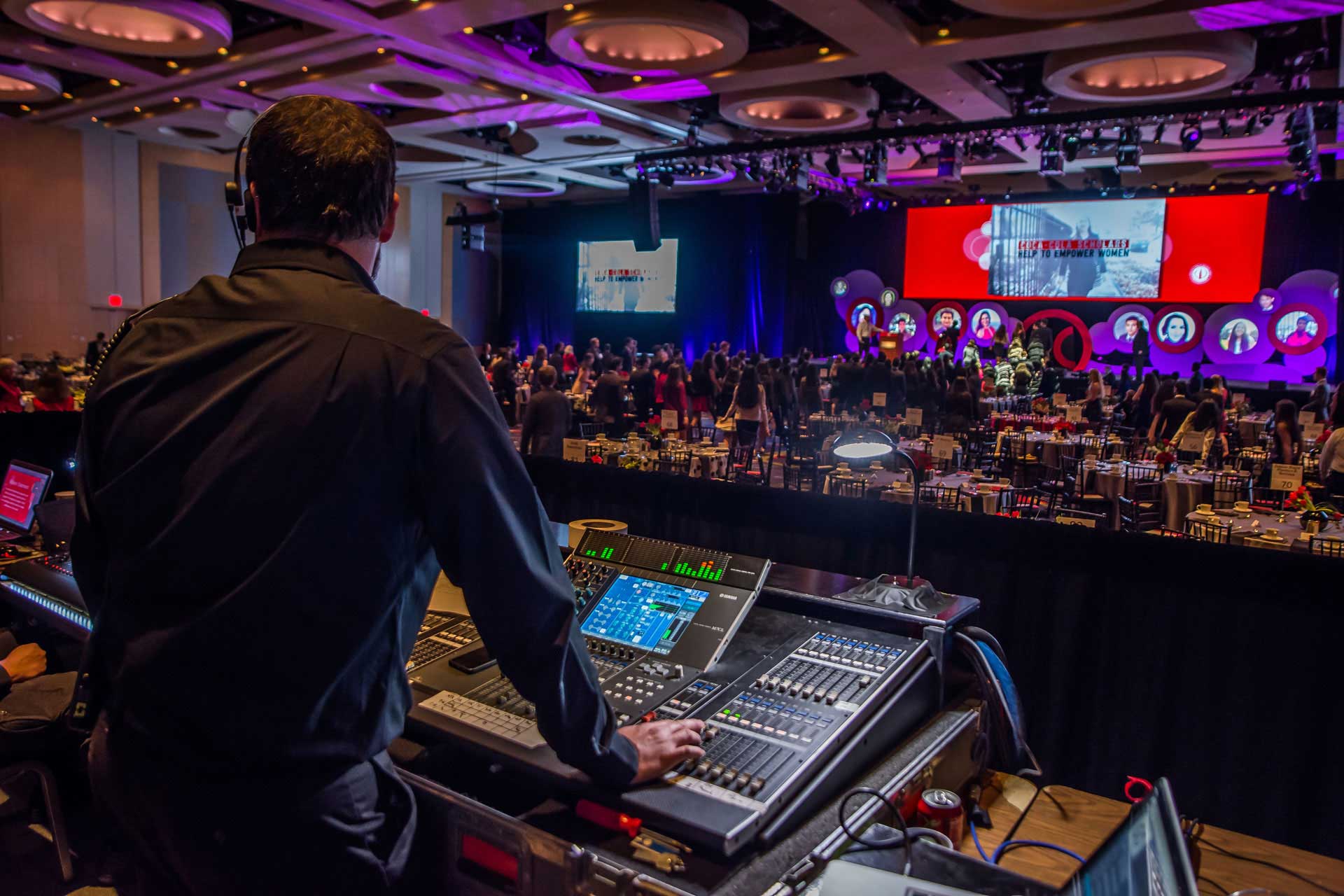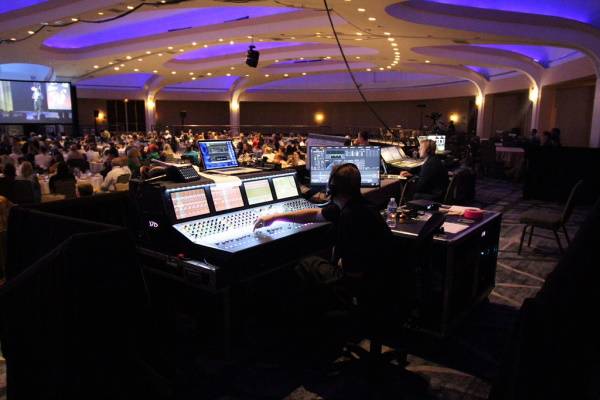Comprehending the Process of Live Event Audio Visual Production
The intricacies of online occasion sound visual production need a blend of technical competence and strategic planning. Each stage, from the first principle to the last implementation, calls for a collective effort among different professionals, including audio designers and lighting designers. Understanding the functions and duties within this ecological community is vital for achieving a smooth experience. As we discover the vital components that add to a successful occasion, it comes to be evident that the foundation hinges on both prep work and adaptability. What happens when unforeseen difficulties arise, and just how do they reshape the manufacturing landscape?
The Importance of Preparation
Efficient preparation is vital for the success of any kind of online event sound visual production. A well-structured strategy serves as the foundation, guiding every facet of the occasion from fertilization to implementation.
Furthermore, thorough scheduling is essential. A thorough timeline that consists of due dates for every stage of manufacturing assists to reduce prospective threats and makes certain that all components are addressed in a timely manner. Moreover, reliable resource allotment is paramount; this includes not just the personnels however likewise the spending plan, location, and materials needed for the event.
Inevitably, comprehensive planning not only enhances the high quality of the audio aesthetic experience yet additionally instills confidence among the team and stakeholders, leading to a smooth and successful occasion. Without this foundation, also the most innovative ideas can fail, underscoring the indisputable relevance of preparation in real-time event audio visual production.

Key Tools and Innovation
A successful live occasion audio aesthetic production relies heavily on the appropriate devices and modern technology to bring the vision to life. Crucial parts consist of audio systems, aesthetic screens, illumination, and control systems, each playing a critical role in making sure a seamless experience.
Stereo are composed of microphones, speakers, and mixers that assist in clear audio distribution. High-grade microphones capture instruments and vocals properly, while mixers permit real-time audio modifications based upon the event's dynamics. Visual screens, consisting of projectors and LED screens, are critical for sharing information and improving target market engagement. The selection of display modern technology can dramatically impact the general visual and performance of the discussion.
Illumination devices is one more important component, as it sets the mood and highlights vital minutes throughout the occasion. Options range from stage lights to smart lights systems that can be set for specific effects. Control systems incorporate sound, aesthetic, and illumination aspects, making sure cohesive operation throughout the production.
Buying reputable tools and understanding the current technological advancements can considerably improve the high quality and effect of real-time occasion sound aesthetic manufacturings, ultimately adding to an unforgettable audience experience. Live Event Audio Visual Production.
Duties and Obligations
Successful online occasion sound visual manufacturing requires a distinct structure of duties and duties amongst employee. Each duty is critical to ensure smooth procedures and attain the preferred end result.
The sound designer is accountable for taking care of audio quality, including microphone positioning, audio blending, and making sure that all audio components are integrated with aesthetic content. The illumination designer develops an ambiance that enhances the occasion's state of mind, selecting proper useful site fixtures and shows lights signs to match the efficiency or discussion.
A video service technician looks after all aesthetic components, consisting of video camera procedure, video clip switching, and forecast monitoring. They work closely with the supervisor, who collaborates the overall manufacturing, making real-time decisions to ensure that the event flows effortlessly.
Manufacturers take care of budgeting and scheduling, guaranteeing that all facets of the occasion line up with the customer's vision. This collective structure enables an effective audio visual manufacturing, lining up each member's knowledge towards a linked goal.
Implementation and Live Production
Carrying out a real-time event calls for thorough planning and real-time flexibility to ensure all aspects come together flawlessly. The implementation stage is where the foundation laid throughout pre-production is placed right into action. Key to this procedure is the coordination of various technical groups, including audio engineers, lighting specialists, and video clip manufacturing teams. Each group must be lined up with the occasion's vision while maintaining clear communication to attend to any unpredicted obstacles that develop during the occasion.

The manufacturing team have to remain vigilant, adapting to target market reactions and responses. Inevitably, successful implementation culminates in a natural real-time occasion that mesmerizes the target market and meets the client's purposes.
Post-Event Evaluation and Responses
Complying with the conclusion of a real-time event, carrying out a detailed post-event evaluation is necessary for recognizing strengths and locations for improvement. This assessment process must involve event feedback from various stakeholders, including attendees, occasion team, and customers (Live Event Audio Visual Production). By utilizing surveys, interviews, and casual conversations, organizers can get valuable understandings into the total experience and effectiveness of the audiovisual manufacturing
Examining technical aspects such as audio top quality, aesthetic read what he said clearness, and tools integrity is critical. Additionally, assessing the control in between the production group and other divisions aids to determine logistical obstacles and successes. Recognizing any kind of problems come across during the event enables teams to create techniques for alleviating comparable problems in future manufacturings.
Moreover, reviewing and compiling comments facilitates the recognition of standout elements, such as interesting presentations or seamless transitions, which can be highlighted in future events. The post-event analysis not only offers a roadmap for renovation however also fosters a society of constant discovering within the team. Eventually, this reflective technique boosts the top quality of future online occasions, making certain that they surpass or satisfy audience assumptions and deliver a remarkable experience.
Verdict
Finally, reliable online event sound visual manufacturing necessitates detailed planning, knowledgeable coordination amongst varied roles, and the assimilation of advanced innovation. Each component, from tools option to team cooperation, plays a vital duty in providing an effective occasion. Moreover, taking part in post-event evaluations enables constant renovation, guaranteeing that future productions gain from understandings gained. Eventually, a well-executed sound original site visual technique significantly boosts audience engagement and adds to the total success of online events.
The details of live event audio visual manufacturing need a mix of technical experience and tactical preparation.Efficient preparation is essential for the success of any kind of live occasion audio visual manufacturing. Without this foundation, even the most ingenious concepts can fail, underscoring the obvious significance of preparation in live event sound aesthetic manufacturing.
Each group has to be aligned with the occasion's vision while preserving clear communication to attend to any type of unexpected difficulties that develop throughout the occasion.
In conclusion, efficient real-time occasion audio aesthetic production demands detailed planning, proficient control amongst diverse duties, and the combination of sophisticated technology.
Comments on “Optimizing Involvement Utilizing Live Event Audio Visual Production Methods”